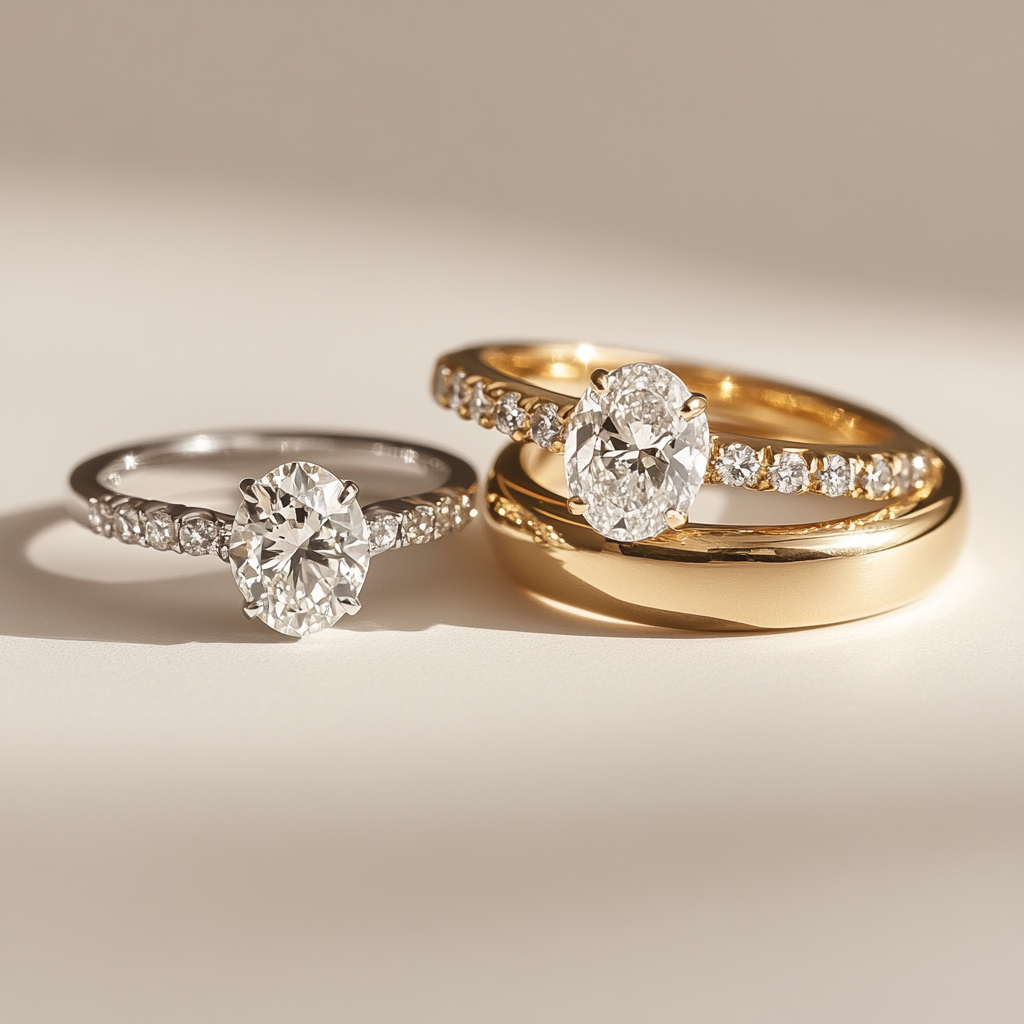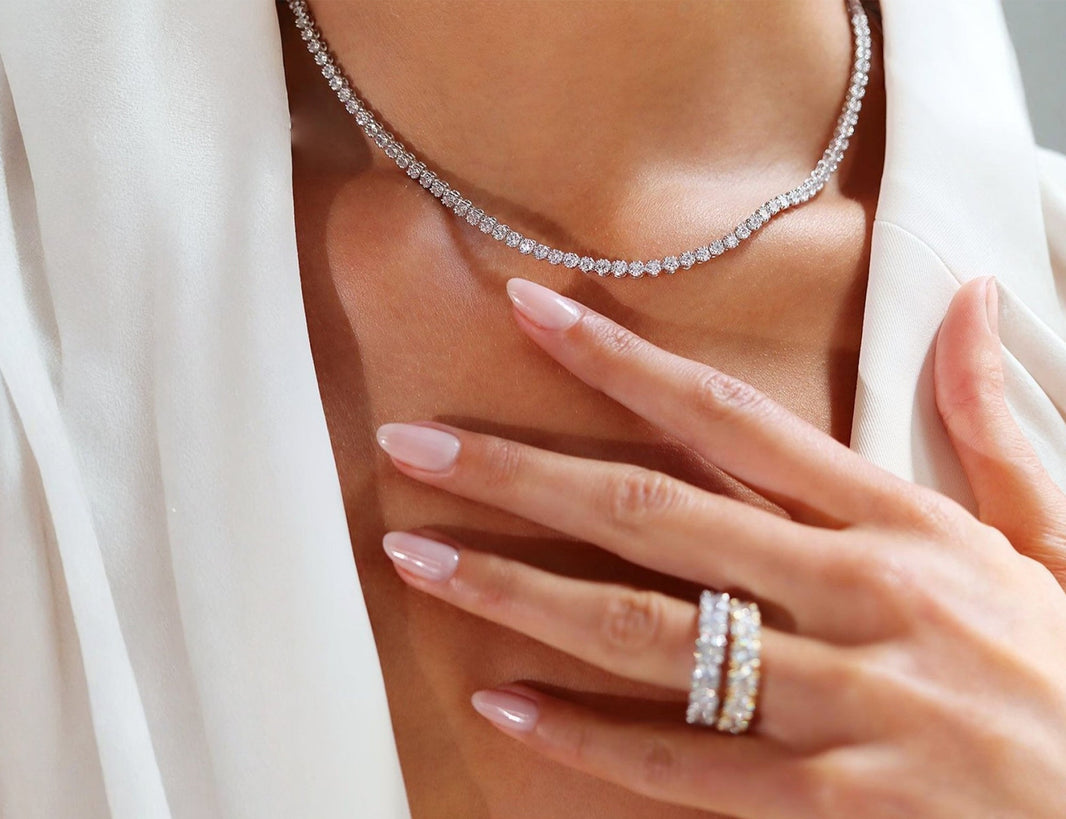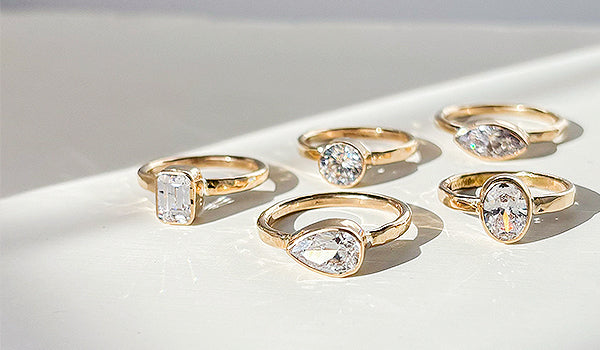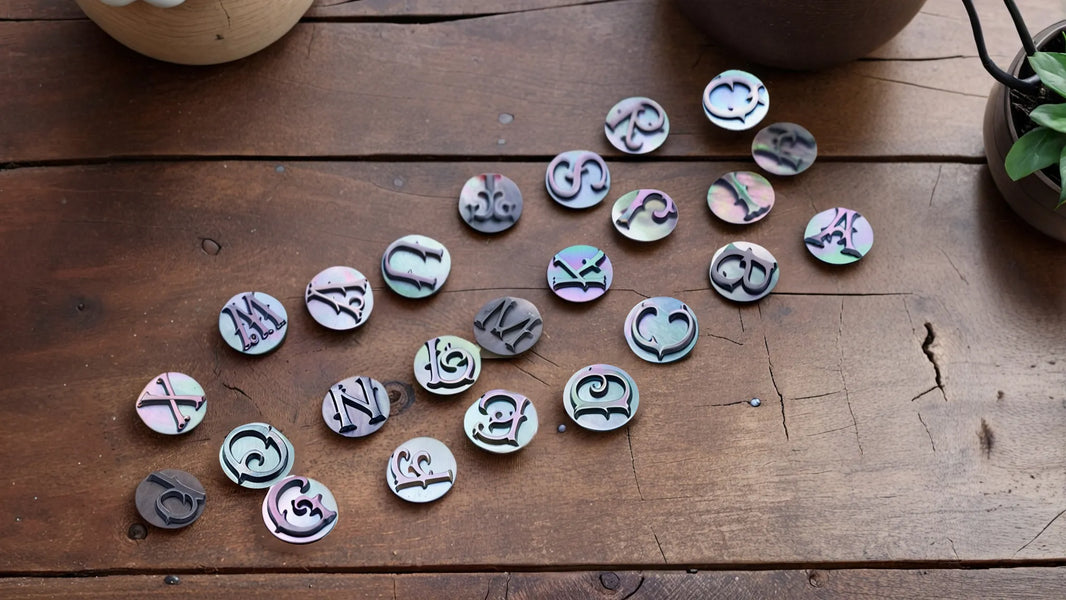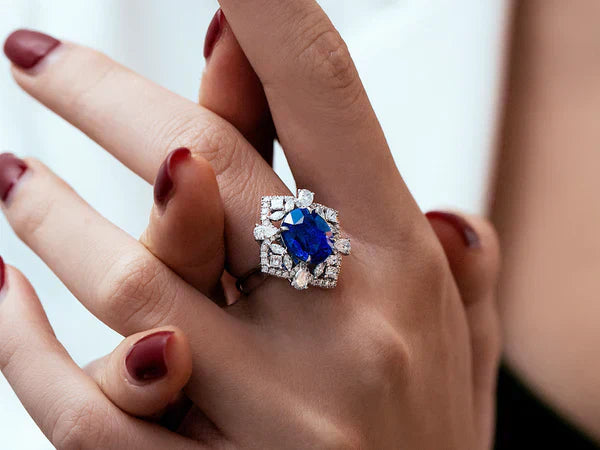More couples are ditching diamonds for colorful gemstones, and aquamarine has become a favorite thanks to its gorgeous blue color and budget-friendly price. But here's the thing - while aquamarine looks amazing, it might not hold up to the daily wear that comes with engagement rings. Sapphires offer that same stunning blue beauty but with way better durability for everyday life. If you want a ring that's both beautiful and built to last, sapphires could be exactly what you're looking for.

What Makes Aquamarine So Popular for Engagement Rings?
Aquamarine has become increasingly popular as an engagement ring choice over the past few years, and there are several clear reasons why couples are choosing this blue gemstone over traditional options.
- The color is genuinely beautiful. Aquamarine ranges from very light blue to medium blue, giving couples options that work with different skin tones and personal preferences. The blue color feels both classic and contemporary at the same time.
- The price point works for most budgets. High-quality aquamarine stones cost significantly less than diamonds of similar size and quality. This means couples can either save money or get a larger, more impressive stone for the same budget.
- It offers a meaningful alternative to diamonds. Many couples want something different from the traditional clear diamond but still want a stone that feels special and appropriate for an engagement ring. Aquamarine provides that middle ground.
- The symbolism appeals to modern couples. Aquamarine represents clear communication, tranquility, and courage - qualities that many people value in their relationships and want reflected in their engagement ring.
- The durability seems adequate for daily wear. With a hardness rating of 7.5 to 8 on the Mohs scale, aquamarine appears strong enough to handle regular use, making it feel like a practical choice for an engagement ring.
These factors combine to make aquamarine an attractive option for couples seeking both beauty and value in their engagement ring choice. For those interested in other gemstone options based on birth months, exploring birthstone engagement rings can provide personalized meaning to your special piece.
What Are the Drawbacks of Choosing Aquamarine for an Engagement Ring?
While aquamarine has many appealing qualities, there are some important limitations to consider before choosing it for an engagement ring that will be worn daily for years to come.
- The hardness isn't ideal for everyday wear. At 7.5 to 8 on the Mohs scale, aquamarine is softer than many other engagement ring stones. This means it's more likely to get scratched by common materials like quartz, which rates a 7, and can chip or crack if knocked against hard surfaces.
- Daily activities can damage the stone over time. Regular tasks like washing dishes, exercising, typing, or even just bumping your hand against surfaces can gradually wear down aquamarine. The stone may develop small scratches or lose its polish after years of constant wear.
- Maintenance requirements are higher than harder stones. Aquamarine engagement rings typically need professional cleaning and re-polishing more frequently to maintain their sparkle and smooth surface. This adds ongoing costs and inconvenience over the ring's lifetime.
- The symbolism doesn't align with traditional engagement meanings. While aquamarine represents tranquility and courage, traditional engagement ring stones symbolize eternal love, commitment, and unbreakable bonds. Some couples prefer stones that carry the historical weight of representing lasting marriage.
- Resale and heirloom value may be limited. Aquamarine doesn't hold its value as well as harder, more traditional stones, which could be important if you plan to pass the ring down through generations or need to sell it later.
These practical concerns make aquamarine a riskier choice for a piece of jewelry meant to last a lifetime.
Why Are Sapphires Such a Strong Alternative to Aquamarine?
Sapphires have been prized by royalty and fine jewelry enthusiasts for centuries, establishing themselves as one of the most respected gemstones in the world. This long history of prestige, combined with exceptional practical qualities, makes sapphires an excellent choice for engagement rings.

The durability is outstanding for daily wear.
Sapphires rank 9 on the Mohs hardness scale, making them the second-hardest natural gemstone after diamonds. This means they can handle decades of daily wear without showing significant scratches, chips, or other damage.
Blue sapphires offer incredible color variety.
From light cornflower blue to deep royal blue, sapphires come in a wide range of blue shades. Many can closely mimic the serene blue color of aquamarine while providing much better long-term durability.
They're built to last a lifetime and beyond.
The exceptional hardness means sapphire engagement rings require minimal maintenance and can easily be passed down through generations without losing their beauty or structural integrity.
Famous sapphire rings add aspirational appeal.
Princess Diana's iconic blue sapphire engagement ring, now worn by Kate Middleton, has made sapphires synonymous with royal elegance and timeless style. This celebrity connection adds prestige to the choice.
The versatility works with any setting style.
Whether you prefer vintage, modern, or classic designs, sapphires complement virtually any metal and setting style. Their durability also allows for more intricate and delicate setting designs without worry.
They maintain excellent value over time.
High-quality sapphires hold their value well and are considered excellent heirloom pieces, making them both beautiful and financially smart choices.
These qualities make sapphires a superior choice for couples who want both stunning beauty and practical durability in their engagement ring.
Natural vs Lab-Grown Sapphires: Environmental Impact and Cost Comparison
Today's environmentally conscious couples have an excellent option in lab-grown sapphires, which offer significant environmental and cost advantages over their natural counterparts.
Environmental Benefits of Lab-Grown Sapphires
Lab grown diamonds only create about 6 pounds of carbon emissions compared to a mined stone creating 125 pounds of carbon emissions per carat. While specific data for sapphires varies, the environmental benefits are substantial:
- Water consumption reduction: Lab grown diamonds only require 18 gallons of water per carat compared to mining requiring an average of 126 gallons of water to mine one carat
- Minimal land usage: Lab Grown Diamonds create no mineral waste compared to mined stones resulting in almost 6,000 pounds of mineral waste created
- Cleaner production: No mining-related environmental disruption, deforestation, or ecosystem damage
Cost Comparison: Significant Savings
Lab-grown sapphires typically cost between $20 and $200 per carat, depending on their color saturation, clarity, representing 70-80% savings compared to natural sapphires. Ceylon blue sapphire price in India ranges from ₹ 2,000 per carat ($30 approx.) and goes up to ₹ 32,000 per carat ($490 approx.) plus, while lab-grown versions of similar quality cost significantly less.
Lab-grown sapphires are increasingly popular among environmentalists who appreciate their conflict-free origins and reduced environmental impact. Lab-grown sapphires do not require the same level of resources and energy as mining operations, further contributing to their eco-friendly profile.
Sapphire vs. Aquamarine—A Direct Comparison
If you're torn between these two gorgeous blue stones, looking at them side by side makes the differences pretty clear.

| What Matters | Aquamarine | Sapphire |
| Hardness Rating | 7.5–8 | 9 |
| How Well It Lasts | Good, but can scratch | Excellent, super tough |
| Blue Color Options | Light blue to blue-green | Lots of shades, especially deep blues |
| What It Represents | Peace, courage | Wisdom, loyalty, faithfulness |
| Cost | Budget-friendly | Higher but worth it |
| Care Needed | More cleaning and polishing | Very little upkeep |
Both stones give you that beautiful blue color, but sapphires clearly win when it comes to lasting through daily wear and needing less care over time. Sapphires beat aquamarine in almost every practical way, while aquamarine's biggest plus is just costing less upfront. If you want a ring that'll still look amazing years down the road, sapphires are worth spending a bit more on since they'll save you money and hassle in the long run.
Why Should You Choose Sapphires Over Aquamarine for Your Engagement Ring?
When it comes to making a sound long-term choice for an engagement ring, sapphires have some very compelling points that make them a more worthwhile investment than aquamarine.
- Their long-term value is far higher. Sapphires will maintain their attractiveness and structural integrity for decades with no ongoing repairs or re-polishing. Their higher hardness guarantees your ring will be just as lovely on your 25th anniversary as it was on your wedding day.
- The symbolism aligns perfectly with marriage. While aquamarine is a symbol of calmness, sapphires are symbols of wisdom, loyalty, and fidelity - qualities that bear direct importance to successful marriages. This important connection makes sapphires appear more appropriate for such a solemn commitment.
- Color range offers greater choice. Sapphires come in a much broader range of blues, from light sky blue to a deep navy, which allows you to pick the perfect hue that will complement your skin and style type.
- They pair with any setting style. Whether you prefer classic Art Deco, contemporary minimalist settings, or classic solitaires, sapphires pair nicely with all styles. Their durability also allows jewelers to create more intricate and dainty settings without worrying about weakening the stone.
- Ethical options are readily available. Lab-grown sapphires offer the same beauty and durability as natural stones while addressing concerns over mining practices. Most ethical suppliers also offer naturally sourced sapphires that are environmentally friendly for consumers who are ecologically aware.
- The investment and heirloom value is excellent. Good quality sapphires hold their value well over the years and are perfect for handing down to future generations. Your engagement ring can become a valuable family heirloom that holds both its beauty and its significance.
These practical, as well as sentimental, benefits make sapphires a superior choice for couples who want an engagement ring that provides both short-term beauty and long-term value.
What Other Gemstone Alternatives Should You Consider Besides Aquamarine and Sapphire?
While sapphires and aquamarine are still favorites, numerous other gemstone alternatives have proven to be popular among couples seeking unconventional engagement rings. An awareness of these alternatives helps put the strengths of sapphires into perspective.

Moissanite
9.25 on Mohs, moissanite is more durable than sapphire and possesses greater fire and brilliance than diamonds. It doesn't, however, possess the range of colors or historic prestige of colored gemstones. Moissanite engagement rings offer exceptional sparkle at a fraction of diamond prices.
Morganite
This beryl family gemstone (aquamarine's cousin) possesses a lovely peachy-pink color at affordable prices. Unfortunately, it shares aquamarine's lesser hardness of 7.5-8 and is prone to scratching due to normal wear.
White Sapphires
These clear sapphires offer excellent durability at a lower cost than diamonds. Although they're highly durable and easy to use, they lack the distinctive color that distinguishes colored gemstone wedding bands.
Emeralds
With their exceptional green color and high value, emeralds are more fragile at 7.5-8 on the Mohs scale and have natural inclusions, so they're less robust for daily use than sapphires.Lab grown emerald engagement rings offer better clarity and fewer inclusions than their natural counterparts.
Lab-Grown Diamonds
These mimic the same characteristics of regular diamonds but at lower prices with better ethical histories. However, they lack the unique color options that draw people to colored stones.
Why Sapphires Still Come Out on Top
Of all the choices that can be found, blue sapphires are special in offering the best combination of lovely color, high wearability, and symbolic meaning. While every selection has its benefits, sapphires provide the best combination of beauty, utility, and value maintenance for serving as engagement rings.
How to Choose the Perfect Sapphire Engagement Ring
Now that you have learned sapphires are the way to go, it is time to choose the actual stone and setting of your ring.
Where Do the Best Sapphires Come From and What Makes Them Special?
- Kashmir Sapphires (The Ultimate Premium): Kashmir sapphires are the finest and, therefore, the most expensive. They have intense color saturation and a medium-dark blue hue with a velvety appearance. Top quality Kashmir Neelam are extremely rare and are sold in millions. These legendary stones were mined only between 1880-1920s and can cost north of $200,000 per carat for gem-quality specimens.
- Burma/Myanmar Sapphires (Royal Blue Excellence): Burma sapphires are famous for their intense "royal" blue color, as opposed to Kashmir sapphires which have a "velvet" blue hue. In India, Burmese blue sapphire price per carat starts from ₹ 25,000 per carat ($390 approx.) and goes up to ₹ 5 lakh per carat ($7795 approx.) and even above. They also tend to be darker than Kashmir sapphires, described as midnight blue.
- Ceylon/Sri Lankan Sapphires (Brilliant and Bright): Ceylon sapphires are considered the finest available sapphires in the world. Sri Lankan blues tend to be a bit lighter and brighter in color than their Burmese brethren and top Sri Lankan blues are often compared to the color of the neck or tail feather of the peacock and are known in the trade as "peacock blues".
Choosing the Blue Shade You Love
Understanding Color Grades:
- Cornflower Blue: Medium to light colors are often termed "cornflower" blues, due to their resemblance to that flower
- Royal Blue: Deep, intense blue with excellent saturation
- Peacock Blue: They have what we call "snap," a slightly electric appearance
Look at different colors of sapphire side by side to understand the range of qualities available. Dark colors like navy or midnight blue, and less saturated colors like grayish blue are more affordable than vivid colors.
Choosing the Right Shape and Cut
To achieve the best overall color, maintain the best proportions, and retain the most weight possible, cutters focus on factors like color zoning, pleochroism, and the lightness or darkness of a stone.
Popular shapes for sapphires:
- Round and oval cuts: Maximum sparkle and brilliance
- Cushion cuts: Vintage appeal with excellent color display
- Emerald cuts: Modern, sleek appearance
While these cuts work beautifully for sapphires, keeping up with popular lab diamond cuts can provide inspiration for your sapphire selection as well, especially since cutting trends often cross over between different gemstone types.
Lab-grown advantage: Lab-created gemstones allow for a greater versatility when it comes to cuts and shapes, as compared to natural sapphires which are constrained by its intrinsic physical properties
Selecting the Perfect Setting Style
Your setting choice should complement both the sapphire and your personal style while providing adequate protection for daily wear. Here are the most popular options:
- Solitaire settings showcase the sapphire as the star. These classic designs work beautifully with any sapphire shape and are timeless choices that never go out of style.
- Halo settings make the center stone appear larger. A ring of smaller diamonds around the sapphire can add sparkle and create the illusion of a bigger center stone.
- Three-stone settings add symbolic meaning. The center sapphire flanked by two diamonds represents past, present, and future.
- Vintage-inspired settings complement sapphires perfectly. Art Deco and Victorian-style settings enhance the classic elegance that sapphires are known for.
Pairing Sapphires with the Right Metal
The metal you choose can dramatically affect how your sapphire looks and should complement both the stone and your skin tone.
| Metal Type | Best For | Appearance |
| White Gold/Platinum | Cool skin tones, modern styles | Makes blue sapphires appear more vibrant and crisp |
| Yellow Gold | Warm skin tones, vintage styles | Creates a classic, traditional look with rich contrast |
| Rose Gold | All skin tones, romantic styles | Adds warmth and creates a unique, contemporary feel |
Getting the Best Value for Your Investment
When shopping for the best sapphire rings, focus on color quality over size, choose reputable dealers who provide certificates, and consider lab-grown options if budget is a primary concern. High quality lab created sapphires have a healthy secondary market. Lab sapphire that looks natural retains its value! More and more couples are opting for lab grown sapphire over natural due to their phenomenal sustainability.
For Natural Sapphires:
- For sapphire, Kashmir receives the highest premium, although Myanmar (Burma), Sri Lanka and Madagascar also produce top-quality gems
- Request certification from reputable labs like GIA or AGL
- Consider stones with minor inclusions for better value
For Lab-Grown Sapphires:
- top quality Lab Created Blue Sapphire at gems for below $100
- Look for stones created using Verneuil/flame fusion or flux methods
- lab grown sapphires are less susceptible to scratches and breakages due to fewer inclusions
Custom sapphire engagement rings allow you to get exactly what you want within your budget and often provide better value than pre-made designs. Remember that a well-chosen sapphire engagement ring will maintain its beauty and value for generations, making it worth investing in quality.
Choose Sapphire Over Aquamarine for Your Perfect Engagement Ring
While aquamarine looks gorgeous and costs less upfront, sapphires are hands down the smarter choice for an engagement ring you'll wear every single day. Sapphires give you that same beautiful blue color but with way better durability, lower maintenance, and the kind of symbolism that actually fits with marriage. You'll spend less money on repairs over the years and end up with a ring that can become a treasured family heirloom. The extra investment in a quality sapphire pays off big time when you consider how much better it will look and hold up over decades of wear.



